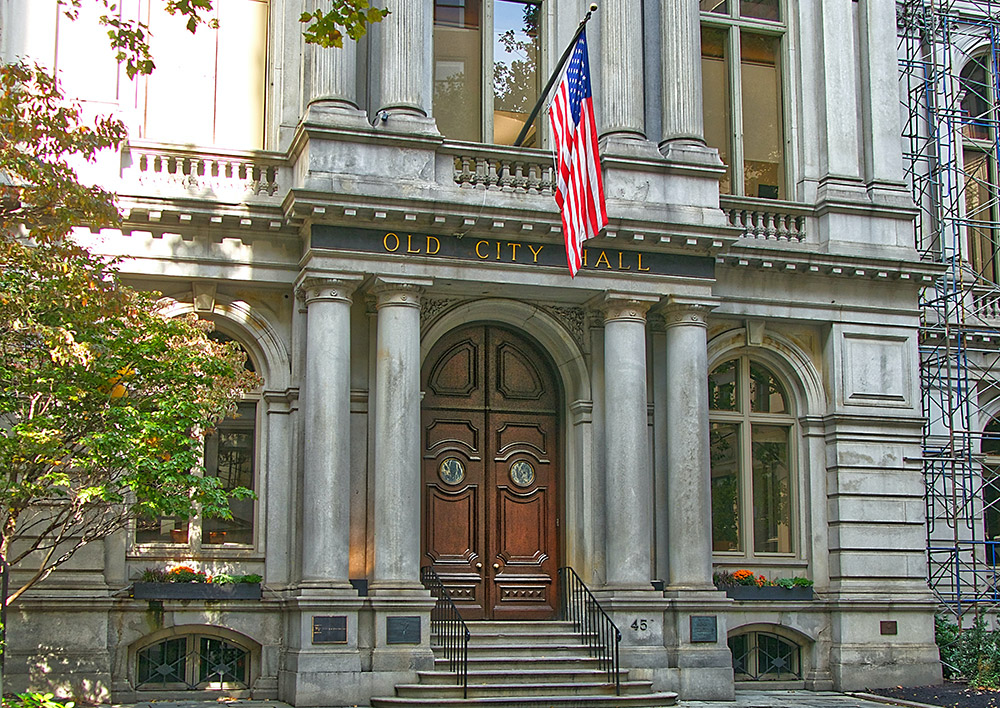Managing projects and reviewing maintenance work is revolutionized with the use of tools that allow for Remote Virtual Inspection (RVI). For those unfamiliar with the terminology, RVI software streamlines the inspection process by allowing inspectors to review a jobsite remotely while reviewing a live video feed. RVI software optimizes scheduling, and documentation processes. It also allows multiple stakeholders with conflicting schedules to be at the same place at the same time. For example, engineering firms, municipalities and crew leads can all review a construction or maintenance project at the same time more easily using RVI software.
Remote Virtual Inspection is not a new technology that sprung up as a result of Covid-19. In fact, RVI has been evolving over the last two decades as internet speeds have improved, and more efficient video conferencing protocols made real-time video communication easier to achieve.
While some government agencies and municipalities have adopted the use of Remote Virtual Inspection technology, the majority are still holding back. This is despite the benefits made even more apparent during the recent Covid-19 pandemic. In a whitepaper by Institute for Building Technology and Safety[i] it was noted that in a recent survey conducted by the International Code Council (ICC), 60% of jurisdictions do not have the capability to conduct critical aspects of their duties remotely.
This is rather surprising given the ubiquity of such tools and the relative ease with which the software can be integrated into workflows.
System and Infrastructure Requirements for RVI
Jurisdictions that believe they do not have the capability to work remotely have a misconception regarding what is required for this technology. The requirements and infrastructure for a Remote Visual Inspection are readily available in any modern office setting or construction site.
Desktop Computers:
The majority of providers of the software have minimal requirements for the operation of the software. System requirements for the Remote Inspector are simply a desktop or laptop computer. The inspector’s machine needs to have a webcam or microphone in order to communicate. These peripherals are high quality and affordable. For example, a HDUSB webcam with microphone costs less than fifty dollars.
Smartphones and Tablets:
System requirements for crewmembers on the job site are also usually on hand. Construction crews need only a smartphone or tablet to capture photos and video. CloudVisit for example, concludes from observations that most construction crews are willing to use their own mobile devices in a Remote Inspection so that they can complete a project efficiently and get paid.
Noise Cancelling Headphones:
Noise-canceling headphones, while not a requirement, can greatly enhance an RVI experience. This is especially true at noisy project sites, where background noise from traffic or construction can make it difficult to hear or be heard without headphones. Remote Inspectors can also benefit from the use of headphones, to eliminate feedback loops from occurring in the session.
High Speed Internet:
Finally, high-speed internet access must be available for all members of a live virtual inspection session to succeed. However, CloudVisit Remote Inspection software even provides functionality to circumvent job sites that do not have sufficient internet connectivity for a live session. Within this scenario, construction crews can upload photo and video inspection evidence, when they return to an area with service. With the bar set so low to accommodate a Remote Virtual Inspection, why are government agencies not utilizing them?
Government Agencies Have a History of Falling Behind on Technology
The fact that a majority of municipalities are failing to embrace RVI at an alarming rate is somewhat unsurprising. Local and state governments have a long history of delaying the adoption of a technology that improves efficiency. A notable example is reflected in the events leading up to 9/11. The previous attack on the World Trade Center in 1993 generated a lot of intelligence information stored in multiple databases by various government agencies such as the CIA, NSA, and FBI. The data being amassed, tracked cell groups and anti-American leaders around the globe. These agencies had no way to share the information they were gathering between themselves. As a result, crucial information that could have potentially helped identify the assailants prior to the attack on the World Trade Center was unrecognized. Even if databases regarding persons of interest had been integrated at the Federal level, the disjointedness between Federal and State governments left the United States quite vulnerable in the hours following the initial attack.
Inefficient bureaucracy has left the United States unsafe in the past. Currently, the United States as a nation is wasting millions, perhaps billions of dollars on the inspection of roads, bridges, and buildings within the country. A majority of the municipal inspections conducted today are still completed in person. This is vastly inefficient when compared to the savings in time and travel that can be gained through RVI. Inspections that are recorded remotely do not require the level of extensive scheduling and travel that is necessary otherwise. Government regulations often require secondary audits. These audits are far easier to accomplish with virtual inspections that are available to multiple parties simultaneously.
A more recent example with tragic consequences is the condo collapse in Surfside, Florida. In this case, there were discrepancies in the engineering firm’s reports. If the reports had been more readily available online, and accessible, human lives could have been saved.
Assisting Municipalities in Adopting Virtual Inspection
The Covid-19 pandemic has resulted in the maxim, “necessity is the Mother of Invention.” In the rush to lockdown communities and observe major limitations to travel, in an effort to quell the spread of the virus, the use of video conferencing went from being a novelty to a necessity. CloudVisit’s virtual inspections have increased from approximately 600 a day prior to the pandemic, to over 1,000 daily as restrictions have lifted. Unfortunately, this increased usage is mostly from industry leaders, while municipalities continue to drag their feet on implementation.
There is some encouraging news, however. As a result of the greater acceptance of video conferencing platforms, various RVI pilot programs have been established by municipalities throughout the country. CloudVisit can help government agencies implement Remote Virtual Inspections to improve public safety and governmental readiness.
The costs of entry into the world of Virtual Inspections have been and still are very low. CloudVisit’s Remote Inspection software has been fine-tuned to work with the functionality and workflow requirements of municipalities. CloudVisit envisions that its patriotic duty is to assist municipalities in achieving greater efficiency. The company is proud to be able to help the United States in this endeavor.
Contact CloudVisit and schedule a demo to see how this Remote Visual Inspection software can improve public safety in municipalities everywhere.

 Language:
Language:







